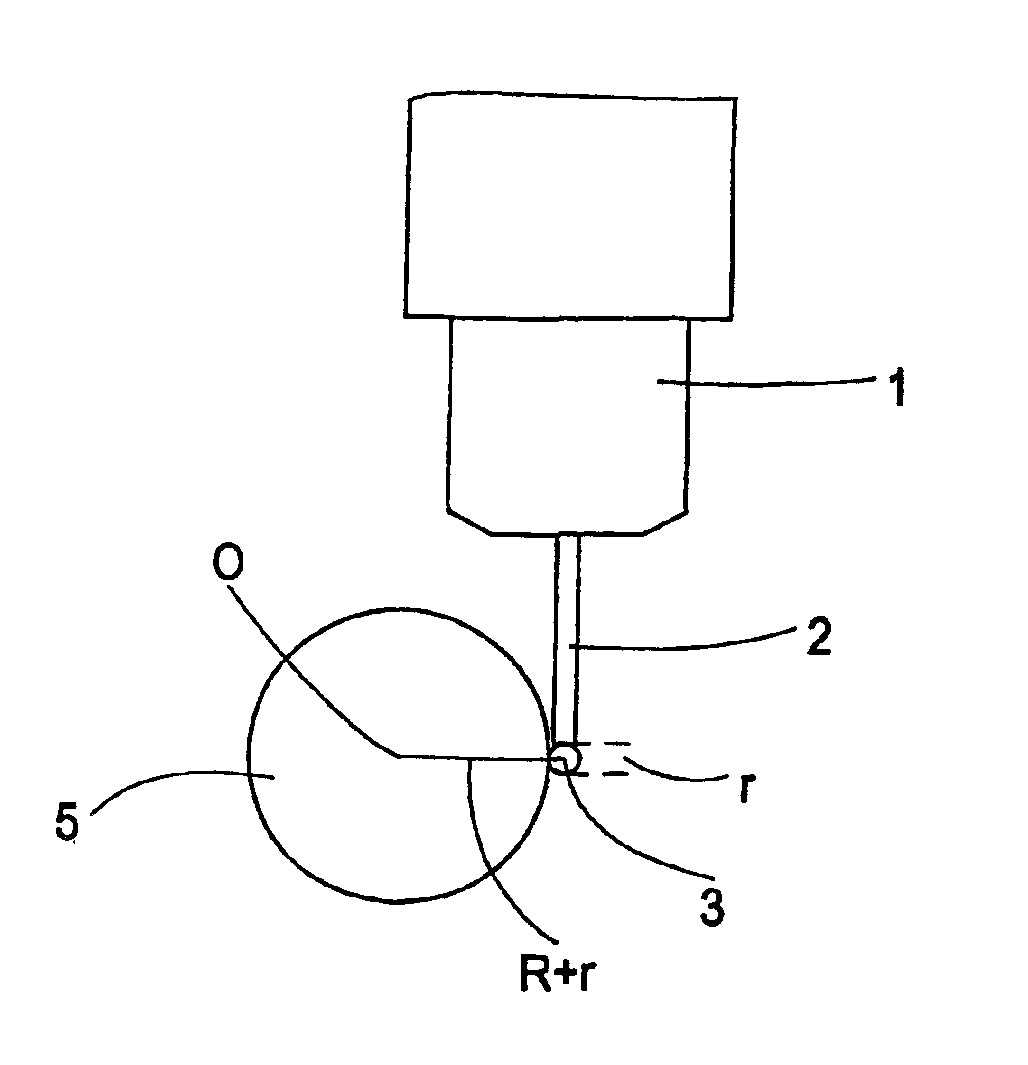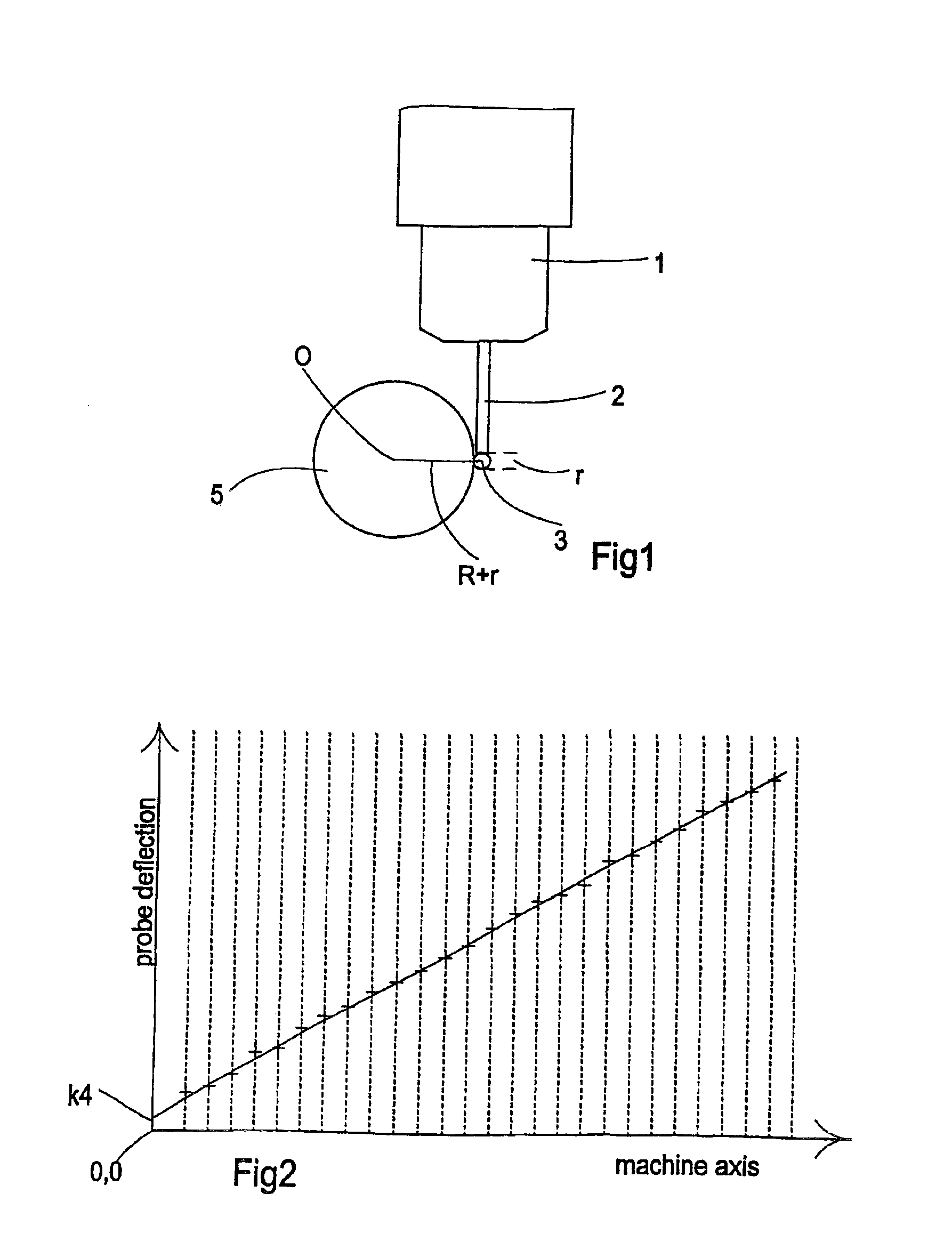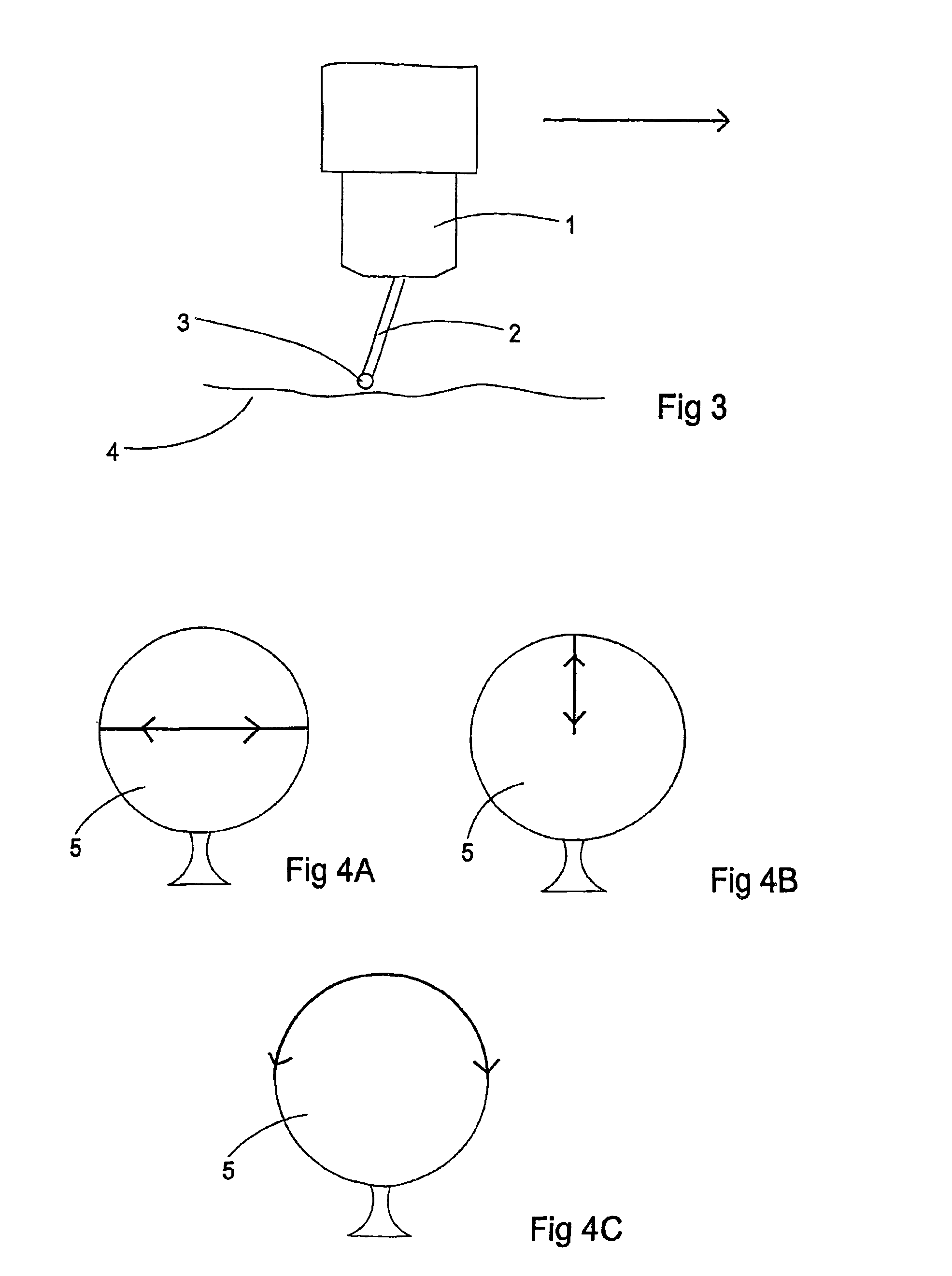Calibration of an analogue probe
an analogue probe and calibration method technology, applied in the direction of instruments, liquid/fluent solid measurement, mechanical measurement arrangement, etc., can solve the problems of stylus slipping on the sphere surface, assumption becoming invalid, and not always being able to achieve alignmen
- Summary
- Abstract
- Description
- Claims
- Application Information
AI Technical Summary
Problems solved by technology
Method used
Image
Examples
Embodiment Construction
)
[0029]Referring now to FIGS. 1 and 2, there is shown an analogue probe 1 mounted on a machine quill (not shown) and which has a stylus 2 with a stylus ball 3 at its free end. The stylus is shown in contact with a reference sphere of known radius R and having its centre O at position X1, Y1, Z1 in the machine axis coordinates. The stylus ball has a radius r which is to be determined, along with the position of the centre of the sphere and the probe transformation matrix.
[0030]As a first step in the calibration method the probe must be “zeroed” in its free condition. This simply involves taking readings from the probe measurement transducers when no contact force is acting on the stylus and setting these to zero in all three axes, or alternatively storing these readings so that they can be subtracted from all subsequent readings.
[0031]The next step is to make an estimate of the position of the centre of the sphere, by taking measurements of points at four positions around the surface...
PUM
 Login to View More
Login to View More Abstract
Description
Claims
Application Information
 Login to View More
Login to View More - R&D
- Intellectual Property
- Life Sciences
- Materials
- Tech Scout
- Unparalleled Data Quality
- Higher Quality Content
- 60% Fewer Hallucinations
Browse by: Latest US Patents, China's latest patents, Technical Efficacy Thesaurus, Application Domain, Technology Topic, Popular Technical Reports.
© 2025 PatSnap. All rights reserved.Legal|Privacy policy|Modern Slavery Act Transparency Statement|Sitemap|About US| Contact US: help@patsnap.com



